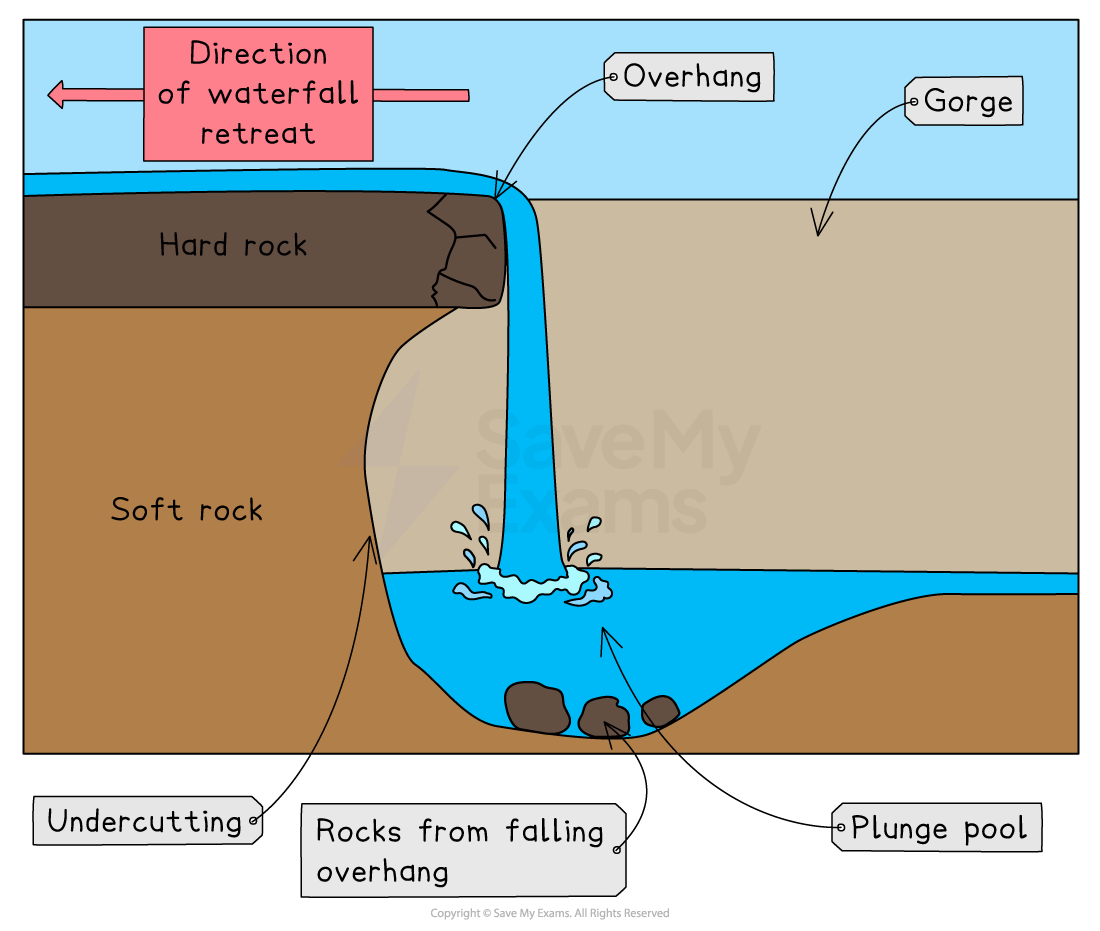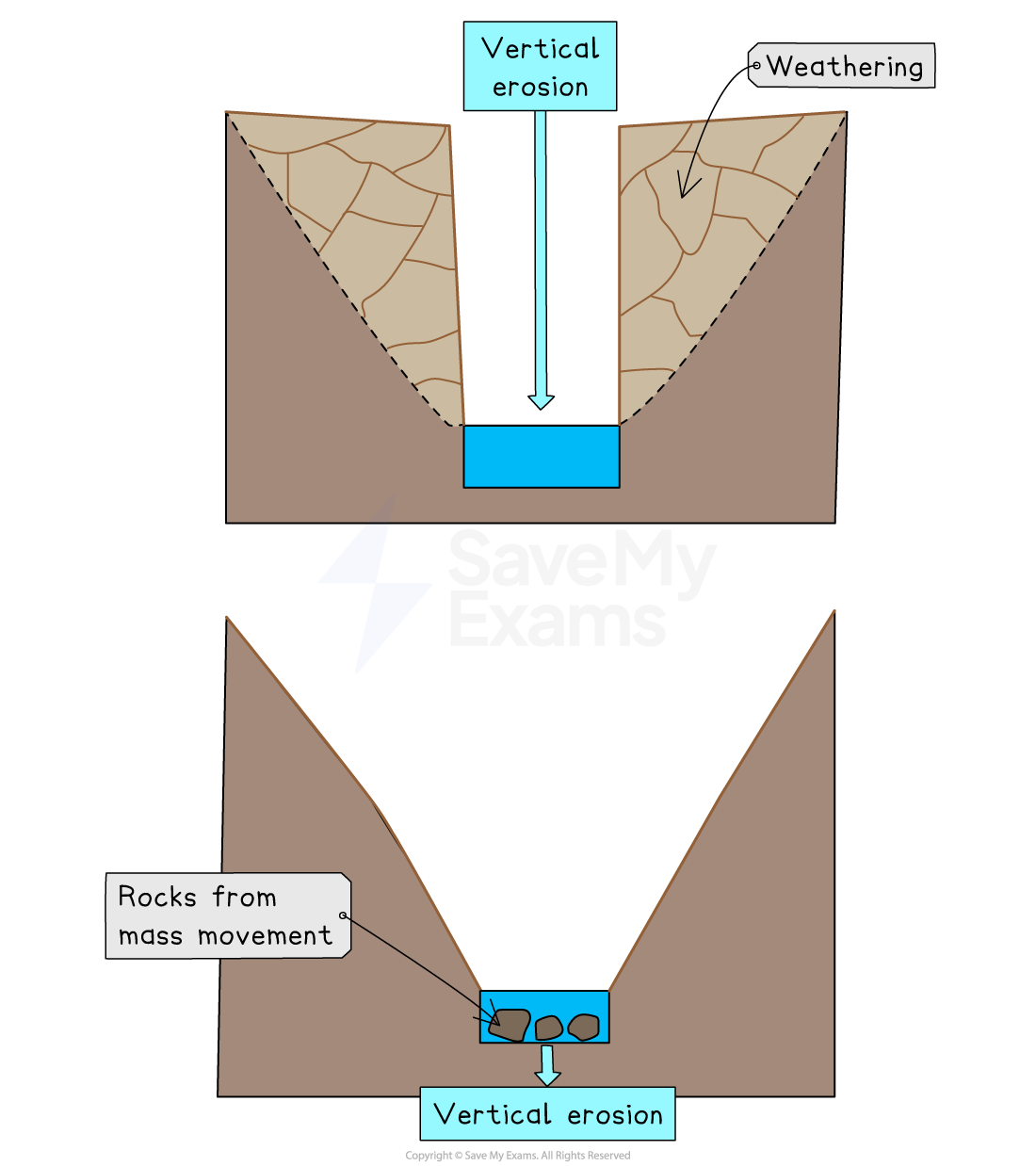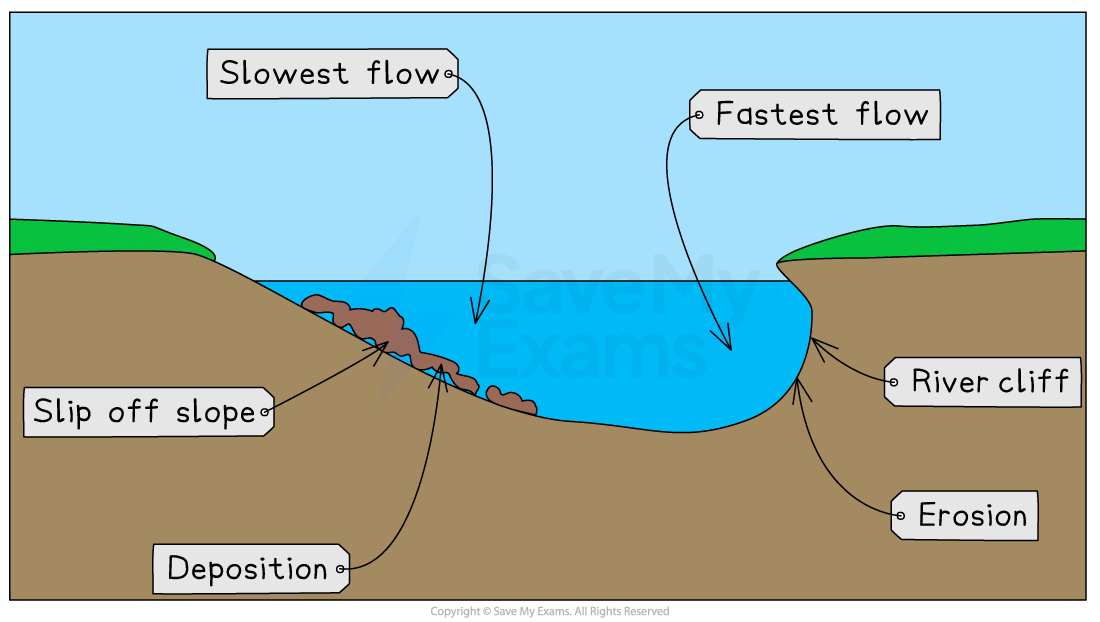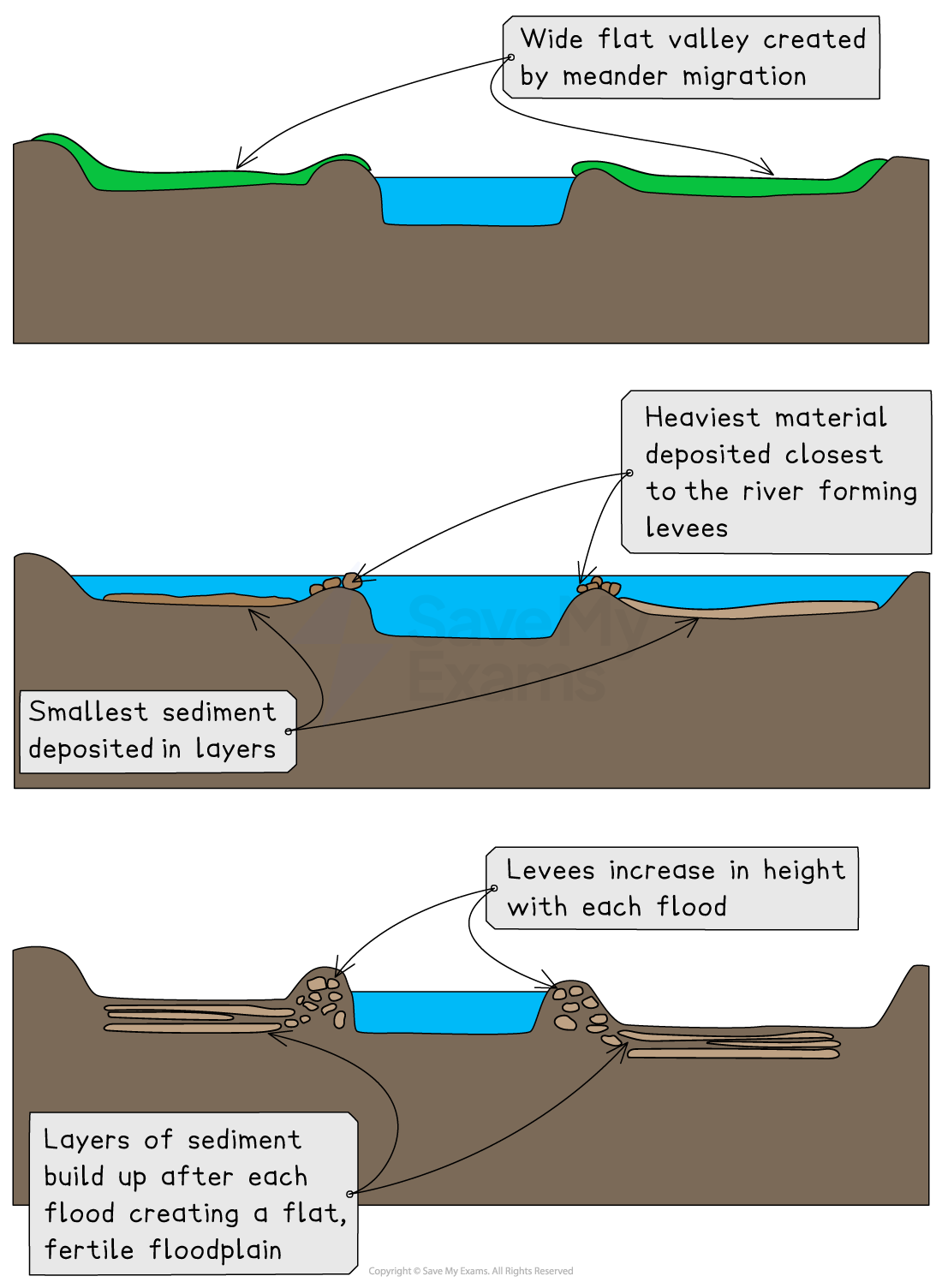River landforms (WJEC Eduqas GCSE Geography B): Revision Note
Exam code: C112
How this note links to the specification
The notes on this page cover part 2.2. 1 of the WJEC Eduqas GCSE B Geography.
2.2.1 How do people and processes contribute to the development of distinctive river landscapes in the UK?
How fluvial processes, combined with weathering, mass movement and human activities create distinctive river landscapes in the UK.
Coverage of landforms must include v-shaped valleys, waterfalls, gorges, meanders, ox-bow lakes, floodplains and estuaries. How human activity affects river landscapes to include creation of reservoirs, dredging and straightening of channels.
How human activity affects river landscapes to include creation of reservoirs, dredging and straightening of channels
River landforms
The changes in river channel characteristics, lead to changes in the river landscape
The upland and lowland areas of rivers have distinctive landforms
Upland river landforms
Upland river landforms include:
Waterfalls
Gorges
V-shaped valleys
Interlocking spurs
Waterfalls and gorges
Waterfalls form where there is a drop in the riverbedfrom one level to another
This drop is often due to changes in the hardness of rock, where hard rock overlies soft rock
Hydraulic action and abrasion are the main erosional processes:
The soft rock erodes quicker, undercutting the hard rock and creating a plunge pool
This leads to the development of an overhang of hard rock which, eventually over time, collapses
The overhang falls into the plunge pool increasing abrasion and making the plunge pool deeper
The process then begins again and the waterfall retreats upstream leaving a steep-sided gorge

V-shaped valleys
Vertical erosion is dominant in the upper course of the river
This cuts down into the riverbedand deepens the river channel
Weathering and mass movement leads to material from the valley sides collapsing into the river, forming a steep v-shaped valley

Interlocking spurs
In the upper course of the river, the channel starts to meander
Erosion happens on the outside of the bend
In the upland areas this forms interlocking spurs

Lowland river landforms
Lowland river landforms include:
Meanders
Ox-bow lakes
Floodplains
Estuaries
Meanders
In lowland areas lateral erosion is dominant
Meanders increase in size
The fastest water flow (thalweg) is on the outside of the river bends, leading to erosion:
The erosion undercuts the riverbank, forming a river cliff
The river bank collapses and the edge of the meander moves further out
The slowest flow is on the inside of the river bends, leading to deposition:
The deposits form a slip-off slope
Deposition on one side and erosion on the other leads to the meander migrating across the valley

Ox-bow lakes
With distance downstream the size of the meanders increase
The erosion on outside bends can eventually lead to the formation of a meander neck
At a time of flood, the river may cut through the neck of the meander, forming a straighter course for the water
The flow of water at entry and exit from the meander will be slower, leading to deposition
The meander becomes cut off from the main river channel, forming an ox-bow lake

Floodplains and levees
Floodplains are flat expanses of land either side of the river
The migration of meanders leads to the formation of the floodplain
High discharge may cause the river to overflow the banks
More of the water is in contact with land surface as the water spreads across the floodplain
Increased friction reduces velocity and material is deposited across the floodplain gradually increasing the floodplain height
The heaviest material is deposited first nearest to the river channel, forming natural embankments called levees

Estuaries
An estuary is where the river meets the sea
Often a very wide, sheltered area
This area of the river is tidal, which means when the tide goes out, the amount of water in the estuary is reduced
This exposes the mudflats at the side of the river channel
The mudflats in the estuary are formed by deposition of the sediment carried by the river
As the river enters the sea, the velocity decreases, leading to deposition
The deposits of sediment build up over time
Examiner Tips and Tricks
When describing landform formation, it is helpful to write the formation down as a sequence of steps. This will make the process easier to remember.
Human activity and river landscapes
Human activity affects river landscapes in many ways, including:
Creation of reservoirs
Dredging
Straightening channels
Creation of dams and reservoirs
Building dams across rivers creates reservoirs
These are artificial stores of water used to increase water supply for:
Domestic use
Industry
Irrigation
The dams can also be used to create electricity via hydropower
The construction of dams and reservoirs
Controls the flow of the water downstream; this may result in lower or higher discharge
Creates a large water store which floods the river valley
Dredging
Dredging involves removing sediment from the riverbed.
This deepens the river and so increases its capacity
Channel straightening
During channel straightening meanders on the river are removed
This creates a shorter and straighter channel so that discharge moves through the channel more quickly

Unlock more, it's free!
Did this page help you?